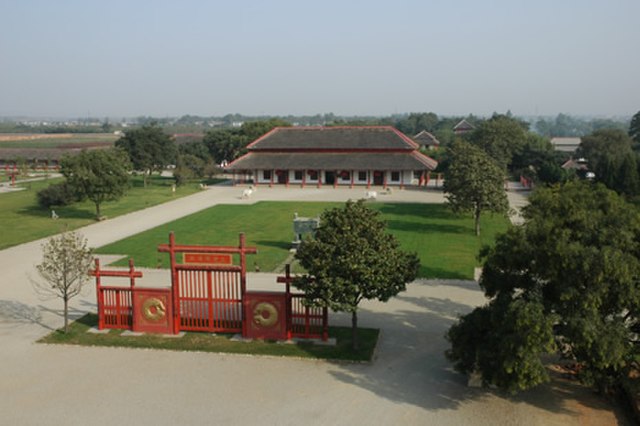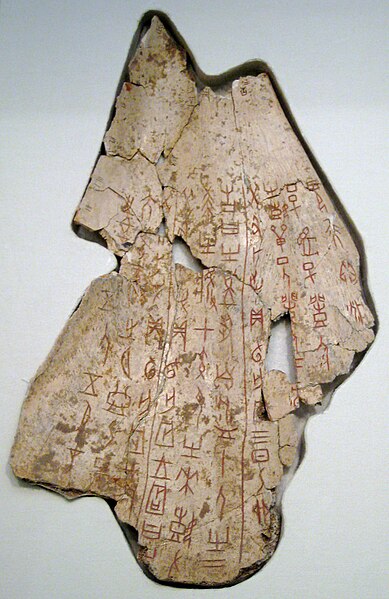The Tomb of Fu Hao lies within Yinxu, the site of the [[Late Shang capital, within the modern city of Anyang in Henan Province, China. The tomb was discovered in 1976 by Zheng Zhenxiang and excavated by the Anyang Working Team of the Archaeological Institute of the Chinese Academy of Social Sciences, who designated the tomb as M5. It is to date the only Shang royal tomb found intact with its contents and excavated by archaeologists.
The Burial Pit at Tomb of Lady Fu Hao, as now displayed
A Bronze vessel in the form of an owl from the Fu Hao Tomb
A jade phoenix, probably some centuries earlier than the tomb
Yinxu is a Chinese archeological site corresponding to Yin, the final capital of the Shang dynasty. Located in present-day Anyang, Henan, Yin served as the capital during the Late Shang period which spanned the reigns of 12 Shang kings and saw the emergence of oracle bone script, the earliest known Chinese writing. The site's existence had been forgotten for millennia, along with that of oracle bone script and other material evidence of the Shang's existence. It was only rediscovered in 1899, following an investigation into oracle bones that were found being sold near the site. The rediscovery of Yinxu marked the beginning of decades of its intensive excavation and study. It is one of China's oldest and largest archeological sites, and was selected as a UNESCO World Heritage Site in 2006. Yinxu is located in northernmost Henan province near the modern city of Anyang, and near the Hebei and Shanxi province borders. Public access to the site is permitted.

The ruins of Yin, the capital (1350–1046 BC) of the Shang (Yin) dynasty
Ox scapula recording divinations by Zhēng 爭 in the reign of King Wu Ding
Burial pit at Tomb of Lady Fu Hao
Houmuwu Ding or Simuwu Ding






